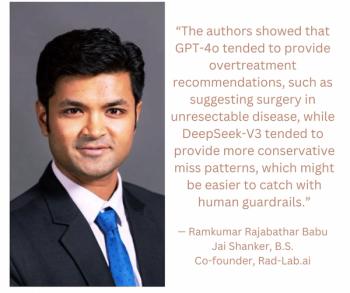
Rapid MRI For Diagnosing Pediatric Appendicitis
MRI without contrast or sedation for diagnosing appendicitis in children.
Rapid MR imaging is an accurate means of diagnosing pediatric appendicitis when considering multiple diagnostic criteria, according to a study published in
Researchers from Oregon Health & Science University in Portland sought to determine the accuracy of rapid MR imaging without contrast agents or sedation as a modality for evaluating pediatric appendicitis.
Ninety-seven subjects were included in the study; 98 rapid MR imaging examinations were performed. The children were aged 4 to 18 years old and were investigated for suspicion of appendicitis. The researchers compared MRI results to clinical outcomes. Receiver operating characteristic (ROC) curves were used to determine cut-points for appendiceal diameter and wall thickness for optimization of predictive power, and the researchers calculated area under the curve (AUC) as a measure of test accuracy.
The results showed that MR imaging had a 94% sensitivity, 95% specificity, 91% positive predictive value, and 97% negative predictive value for detecting appendicitis. Optimal cut-points for appendiceal diameter was 7 mm or more, and for wall thickness, 2 mm or more. Independently, the cut-points produced sensitivities of 91% and 84% and specificities of 84% and 43%. The researchers noted that presence of intraluminal fluid (30/33) or localized periappendiceal fluid (32/33) showed a significant association with acute appendicitis, with sensitivities of 91% and 97% and specificities of 60% and 50%. For examinations in which the appendix was not identified by one or both reviewers (23/98), the clinical outcome was negative.
The researchers concluded that rapid MR imaging without contrast agents or sedation is accurate for diagnosis of pediatric appendicitis when multiple diagnostic criteria are considered in aggregate.
Newsletter
Stay at the forefront of radiology with the Diagnostic Imaging newsletter, delivering the latest news, clinical insights, and imaging advancements for today’s radiologists.




























